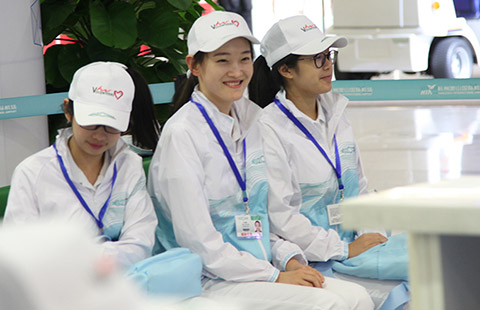More green cars needed
(China Daily) Updated: 2012-04-24 11:02With a record 1,125 vehicles being showcased at the biannual Beijing Auto Show, which opened on Monday, carmakers from home and abroad have clearly shifted to top gear in their bid to woo Chinese consumers.
It is the proven potential of a market of more than 1.3 billion people that has fueled their excitement. New car sales in China totaled 18.5 million last year, making the country the largest auto market in the world for the third consecutive year.
When the vehicle penetration level remains only about one tenth that of developed countries, major carmakers can't afford to lag behind in the race to get ahead in the booming Chinese market.
However, while the increasing importance carmakers attach to this market will help guarantee the quality of service and mean greater consumer choice, more new gas-guzzling cars alone are not what the country needs.
Given China's mounting energy and pollution challenges, carmakers should fully understand the urgency of accelerating the development of energy-saving and new-energy vehicles.
There is talk that China's aspiration to embrace green cars is mainly to build a new-energy car industry that can export vehicles all over the world. Its enormous market scale and growing manufacturing prowess could make that possible, but it is not a goal in itself.
It is estimated that if vehicle ownership levels in China reach those of the United States, China alone will consume more oil than the world can produce nowadays.
Meanwhile, worsening air pollution in more and more Chinese cities is demanding an immediate solution that can only be provided jointly by the government and the auto industry.
Last week, the government adopted a new industry development plan for energy-saving and new-energy vehicles, setting a production and sales target of 500,000 all-electric and plug-in hybrid vehicles by 2015 and more than 5 million by 2020.
The latest government plan is less ambitious than its predecessor, which aimed to put 1 million electric cars on the roads by 2015, but after the electric car industry's many false starts, it is good that policymakers have recognized that a steadier pace is more realistic.
For the domestic and overseas carmakers who brought some 88 new-energy vehicles to the Beijing Auto Show, they need to do more to promote green cars in China.
After all, only game-changing green cars will survive when dwindling supplies of oil push gas prices through the roof.
- Samsung launches Note 7 in China
- Intel eyes China's Internet of Things market
- Goodies for journalists attending G20 summit in Hangzhou
- UN official lauds China's G20 presidency in promoting sustainable development
- China's Sichuan province promotes tourism in Denmark
- Tourism in Xinjiang hits record high in first half
- China will escape middle income trap: Former Australian PM
- Economic reforms put China on more sustainable growth path: BCG chairman
















